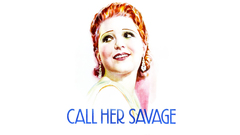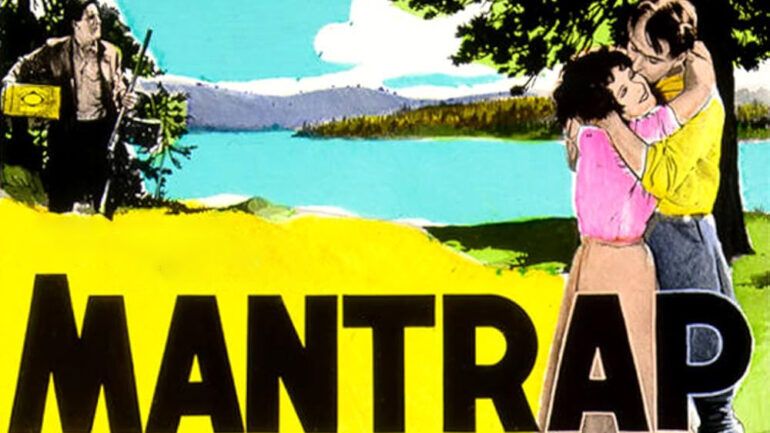Clara Bow

Actress
Birth Date: July 29, 1905
Death Date: September 27, 1965 — 60 years old
Birth Place: Brooklyn, New York
Spouses: Rex Bell
Hollywood's original "It" Girl and the first true sex symbol of the silver screen, silent-era actress Clara Bow enjoyed unprecedented stardom. Emerging from the tenements of Brooklyn in the early 1920s, Bow was signed by independent movie producer B. P. Schulberg and placed in projects like "Black Oxen" (1923) and "Wine" (1924), films that established the free-spirited actress as Hollywood's "perfect flapper." Efforts like "The Plastic Age" (1925), "Mantrap" (1926), "Wings" (1927) and the career-defining "It" (1927) transformed Bow not only into the biggest movie star of her age, but a bona fide screen legend as well.
Unlike many of her fellow silent film stars, the advent of the "talkie" failed to knock Bow off her throne as the reigning movie queen, and sound pictures like "The Wild Party" (1929) and "True to the Navy" (1930) continued to attract audiences in droves. After struggling with the pressures of stardom for some time, Bow chose to leave film forever in 1933. Though nearly forgotten, Bow's legacy was kept alive through film restoration efforts and her influence clearly evident in the style choices of many top contemporary female entertainers decades after her departure from the screen.
Clara Bow was born on July 29, 1905 in Brooklyn, NY to parents Sarah and Robert Bow in the midst of a record-breaking heat wave that threatened the lives of both the newborn and her mother. Her Dickensian childhood was marked by poverty, uncertainty and violence. Bow's mother, Sarah, had for years suffered from mental illness, a condition worsened by the infant deaths of two girls born prior to Clara, and a severe head injury sustained in a fall at the age of 16. Her father, Robert, although bright and personable, was a resolute underachiever who was frequently unemployed and absent from the family's tenement home for extended periods of time.
Never comfortable in the company of girls her age, Bow was an unrepentant tomboy as an adolescent, and often sought refuge from her chaotic home life in the dreamlike confines of the cinema. It was while studying the actresses performances on screen that a 16-year-old Bow made the decision to become a movie star. In 1921 she entered the annual Fame and Fortune Contest sponsored by an entertainment magazine publisher. After a grueling series of audition rounds - the final one against an obviously more experienced, traditionally attractive contestant - the young Bow won the competition, receiving an evening gown, a trophy and a promise to help the aspiring young actress gain entrée into the film industry.
After a period of nerve-wracking inactivity - during which time Clara's father encouraged her to go "haunt" the offices of the publisher until they lived up to their part of the bargain - Bow was offered a small role in the melodrama "Beyond the Rainbow" (1922). In her film debut, she played a young, mercurial debutante who stirs up trouble at a high society function. Bow was mortified, however, when, after inviting her school friends to come see the movie upon its release, she discovered that her brief scenes had been removed entirely. Oddly, her name and cast listing were maintained in reviews of the film at the time, and after her rise to fame, "Beyond the Rainbow" enjoyed a re-release with her scenes restored. Distraught and fearing that winning the contest would ultimately lead nowhere, Bow continued to make the rounds at the New York studios, going on auditions and hoping for a break.
That break finally came when a director, who was looking to cast a "tomboy" character for his next picture, plucked her out of thin air after seeing her contest photos. Ecstatic about the offer, Bow was also nervous about the fact that she would have to leave her Brooklyn neighborhood for the first time in her life, as the film was being shot on location in New Bedford, MA. Clara's first trip away from home was, unfortunately, the least of her concerns.
Her schizophrenic episodes on the rise, Bow's mother, who had vehemently opposed Clara's acting pursuits, had recently made ominous comments about her daughter being better off dead. Late one night in early 1922, Clara was awakened by her mother, who calmly held a butcher knife to her daughter's throat and announced her intention to kill her. Miraculously, the young girl escaped, locked her mother in her room and fled to a neighbor's until her father returned. Later, Sarah - who remembered nothing about the attack - was admitted to a sanitarium, only to return home where her health rapidly deteriorated until she passed away a year later. Immediately following the traumatic incident with her mother, Bow left with a chaperone to film "Down to the Sea in Ships" (1922), a drama detailing life and romance in a New England whaling community.
Traumatized by her mother's condition, the youngster considered giving up her movie aspirations, but managed to pick up small, uncredited turns in the films "Enemies of Women" (1923) and "The Daring Years" (1923). At about this time, Bow was brought to the attention of B.P. Schulberg, studio chief of independent Preferred Pictures. Initially offered a three month contract by Schulberg, Bow was announced as a member of Preferred's permanent stock of actors within days of her arrival in Hollywood. Schulberg quickly set about casting Bow in Preferred projects such as "Maytime" (1923), as well as recouping his investment by loaning the neophyte actress out to other studios - a common practice at that time - for features like the Frank Lloyd-directed "Black Oxen" (1923).
It was in the latter film that Bow first played a high society "flapper" - a freewheeling, convention-flouting persona for which she would be forever associated. The following year, based largely on the strong reviews she had received for "Down to the Sea in Ships," Bow was assigned the title of WAMPA Baby Star of 1924 by the Western Association of Motion Picture Advertisers. Her fortunes continued to rise, when she was assigned a co-starring role in the juvenile delinquent melodrama "Grit" (1924), in which she was cast as a former gang member attempting to walk the straight-and-narrow with her formerly lawless boyfriend (Glenn Hunter).
By now, Bow was beginning a brutally taxing pace of work, shooting as many as three films simultaneously, she once claimed. A pair of well-received efforts, "Poisoned Paradise" (1924) and "Daughters of Pleasure" (1924), even managed to oust the more established silent film star - and Bow's primary rival - Colleen Moore as Hollywood's preeminent flapper. On loan to Universal, she took on her first top-billed role in the prohibition dramatic-comedy "Wine" (1924), playing an innocent society girl whose exposure to speak-easies transform her into a "red-hot mama," as one reviewer of the time so eloquently put it. She was becoming a box-office bonanza for Schulberg, and working incredibly long hours. Bow was also, by her own admission, "running wild" and engaging in escapades that would both endear her to the press at the height of her fame, and plague her during her final years as an actress.
Not simply a popular feature in movie theaters, Bow was influencing American culture in clearly recognizable ways, the most famous being her iconic lipstick application, giving the upper lip a heart-shaped appearance, something referred to as putting on a "Clara Bow." In 1925, working both for Preferred and on loan to other studios, the actress appeared in a staggering total of 15 films. One of them was "The Plastic Age" (1925), a collegiate romantic comedy, with Bow playing a cute co-ed romancing the school's star athlete (Donald Keith). Although many critics found the idea of Bow as an academic hard to swallow, audiences loved her in the role, marking a radical departure from her established flapper image. It was also on this film that she met actor Gilbert Roland, with whom she later became engaged.
A temporary romance - one of many to come - gossip scribes of the day considered Bow's "engagement" a useful euphemism for what was essentially a thinly disguised sexual affair. "The Plastic Age" proved not only to be Preferred's biggest Clara Bow hit, but her final effort at the struggling studio, as well. In 1925, Preferred filed for bankruptcy and Schulberg soon went to work at Paramount Studios, taking his prize asset along with him - Clara Bow. At Paramount, the actress continued to garner ever more glowing reviews for work in such projects as "Dancing Mothers"(1926) and "Mantrap" (1926). Exceedingly happy with their return on investment, Paramount quickly re-signed Bow to a five-year contract.
Looking to further capitalize on their new acquisition, Paramount hired popular women's author Elinor Glyn to pen a story around which a Clara Bow vehicle would be created. That film, simply titled "It" (1927), was a Cinderella story about a poor shop girl (Bow) whose inescapable charm wins the heart of her wealthy employer (Antonio Moreno). Loosely defined, "It" was an unquantifiable (and undeniable) sex appeal. According to Glyn and nearly every reviewer and newspaper pundit of the time - even acerbic wit Dorothy Parker acknowledged the actress' attributes - Bow had "It" in spades. Immediately dubbed "Hollywood's 'It' Girl" by the ever shrewd Schulberg, Bow not only became the most popular movie star of her day, but a true film legend. Backed by Paramount's formidable marketing muscle, "It" became the biggest hit of her career. It also brought her more public scrutiny, compliments of an often vicious press, than she had ever endured before. Bow's unconventional, live-for-the-moment lifestyle and unapologetically unrefined manners became fodder for the tabloids and a source of ridicule amongst many of Hollywood's elite - most of whom had come from equally humble beginnings themselves. Also that year, Bow starred alongside a young, unknown Gary Cooper in the romantic drama "Children of Divorce" (1927).
With her "engagement" to Roland and a secretive affair with director Victor Fleming both ended, the pair entered into a brief, stormy relationship. Notoriously jealous, Cooper soon tired of her flirtatious behavior and the two parted ways. Bow next starred in the World War I aerial adventure "Wings" (1927). A romantic drama about two fighter pilots in love with the same girl (Bow), the film won the very first Academy Award for Best Picture, and was yet another hit for Paramount's biggest star and the No. 2 box-office draw in the country. Continuing to work at a furious pace, Bow pushed her way to the top of the box-office heap with such films as "Red Hair" (1928) and "Ladies of the Mob" (1928).
Then there was the advent of sound to motion pictures - the bane of nearly all movie actors at the time, and the death knell for the careers of many. Like most of her contemporaries, Bow had nothing but distain for the technological advancement, complaining that it distracted her during shooting and sapped the energy and mystery out of her performance. To the surprise of many, however, neither her slightly nasal voice nor her unrefined Brooklyn accent proved to be a deterrent with audiences. Bow's first "talkie," "The Wild Party" (1929), was yet another hit for the still reigning No. 1 film star in the U.S., as were subsequent releases, including "Dangerous Curves" (1929) and "The Saturday Night Kid" (1929). Although not a fan of her own voice, Bow was actually a reasonably accomplished singer when called upon for vocal performances in films like "True to the Navy" (1930).
Despite her successful transition to sound and continued box-office domination - surpassed in 1930 only by fellow film icon Joan Crawford - Bow was quickly reaching the end of her physical and emotional rope. Several factors contributed to the actress' fragile state at the time, having made an astonishing 45 films in six years being primary among them. Additional pressures of fame, an intrusive media, and various court battles - she was actually sued once on the basis of stealing another woman's husband - built to the breaking point. A scandal involving a former employee and confidant who first embezzled from Bow, then spread embarrassing and exaggerated stories about her sexual behavior, was the last straw.
By the end of the year, Schulberg was publicly referring to the troubled star as "Crisis-a-day Clara." Upon completing two more pictures - "No Limit" (1931) and "Kick In" (1931) - Bow's inevitable breakdown finally arrived. After asking to be released from the final film in her contract with Paramount, she was admitted into a sanitarium in the spring of 1931. It was during her convalescence that she met cowboy actor Rex Bell. Clearly a much-needed calming influence on the high-strung actress, Bell married Bow in Las Vegas in December of 1931. She returned to Hollywood the following year and signed a two-picture deal with Fox Studios, for whom she made "Call Her Savage" (1932) and "Hoopla" (1933) before retiring for good at the age of 28.
Shortly thereafter, Bow and her new husband moved to a ranch in Nevada, where she gave birth to two sons. Never fully free from her mental problems, Bow attempted suicide in 1944 while Bell was making a bid for a seat in the U.S. House of Representatives. A suicide note later revealed that the emotionally fragile and publicity shy Bow found death preferable to a future life in the public eye. In 1949, Bow voluntarily entered a mental health institution in hopes of finding relief from her erratic emotional state and chronic insomnia. After being subjected to a multitude of tests and, unfortunately, shock therapy, the doctors offered schizophrenia as a primary diagnosis. More likely, Bow was suffering from bi-polar disorder, a little understood condition at the time. Disappointed and unconvinced by their findings, she soon left the facility and returned to Bell at the ranch in Nevada, where her husband was later elected Lieutenant Governor.
Shortly after Bell's death in 1962, Bow moved to the Century City area of Los Angeles, remaining there under the care of a nurse until her death from a heart attack in 1965. Clara Bow, Hollywood's original "It" girl, was 60 years old. Although Bow was rightfully acknowledged with a star on the Hollywood Walk of Fame years after her death, tragically, many of the 57 films she made during her career were lost forever. Of those that remained, several existed only in fragments or as incomplete prints. Thankfully, some of her most famous, including "It" and "Wings," were preserved for future generations to enjoy.
Credits

Glimpses

Gaslight Follies

Hoopla

Call Her Savage

No Limit

Kick In

True to the Navy

Paramount on Parade

Her Wedding Night

The Wild Party

The Saturday Night Kid

Dangerous Curves

The Fleet's In

Red Hair

WingsStream

Children of Divorce

Hula

Get Your Man

It

Kid Boots

The Plastic Age

Dancing Mothers

Mantrap

My Lady of Whims

Kiss Me Again

Free to Love

The Best Bad Man

Parisian Love

Wine

Poisoned Paradise

The Enemies of Women

Black Oxen

The Pill Pounder




































































































































